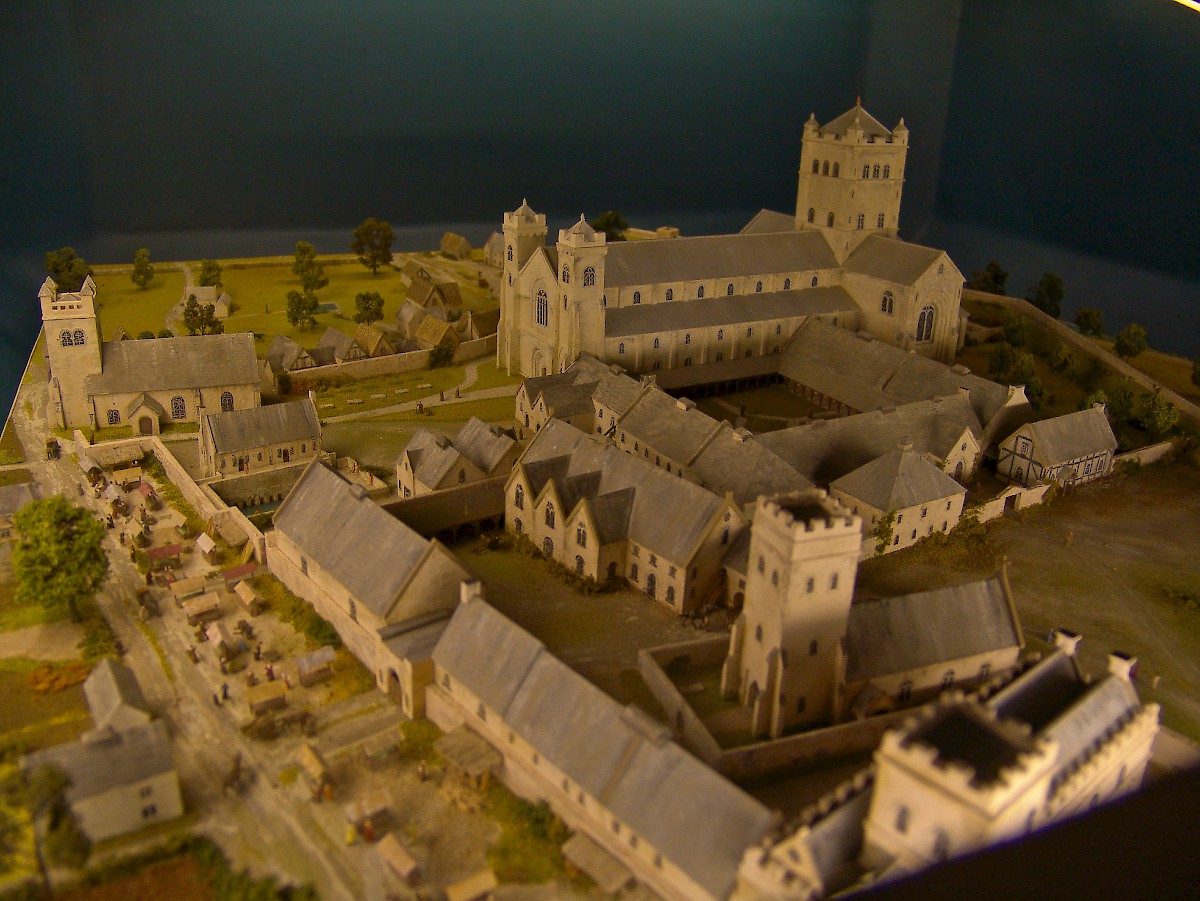By chance I came across an online article from Current Archaeology from 2019 about excavations within the building at Bath Abbey as part of the installation of a new heating system. What was revealed were portions of the previous cathedral.
At Bath the medieval church of the Benedictine cathedral priory was replaced in the early sixteenth century by a new church at the instigation of Bishop Oliver King - of whom
Wikipedia has a biography at Oliver King. This new church only occupied the site of the nave of its medieval predecessor, the crossing and eastern portions of which may have remained in a ruined state for some years afterwards. The roofing of the present church was not completed until the early seventeenth century.
Quite how Bishop King and his architect envisaged fitting the new cathedral with the existing plan of the medieval monastery is unclear, nor indeed why a church so significantly smaller than its predecessor was commissioned. The design looks to have some similarities to St George’s Windsor where the Bishop, Secretary to its builder King Edward IV, held a canonry from 1480 until his death in 1503.
Bath Abbey, as it is usually known, has an odd status. The co-cathedral of the diocese with Wells from the early thirteenth century and still included in its episcopal title it possesses a cathedra for the Bishop. On the first Sunday after his enthronement at Wells it is the custom - I am not sure how old a one it is - for the new Bishop to visit and occupy his throne. However Bath has no Dean and Chapter, and never had one to replace the medieval cathedral priory after 1539. it is simply a parish church. In that it survived it fared better than the equivalent monastic cathedral in Coventry.
Some years ago the plan of the apsidal east end and ambulatory and chapels of the Norman cathedral were recovered by excavation. The work inside the present church revealed more Norman masonry used to underpin the sixteenth century building and also the remains of a very fine tiled floor with heraldic designs. This is interpreted as early fourteenth century work from a restoration carried out by Bishop John Drokensford.
The illustrated article can be read at Underneath the abbey: Uncovering more than 1,000 years of religious life in Bath
Since then other associated excavations outside the present Abbey have revealed remains of the Anglo-Saxon monastic complex. These may be as early as the time of King Offa in the late eighth century or be from the tenth century when the abbey at Bath was the setting for the coronation of King Edgar at Pentecost 973. These discoveries are reported upon in another Current Archaeology article from last year at Anglo-Saxon buildings beneath Bath Abbey

A reconstruction of the monastic cathedral before it was rebuilt by Bishop King
Image:reidsengland.com

No comments:
Post a Comment